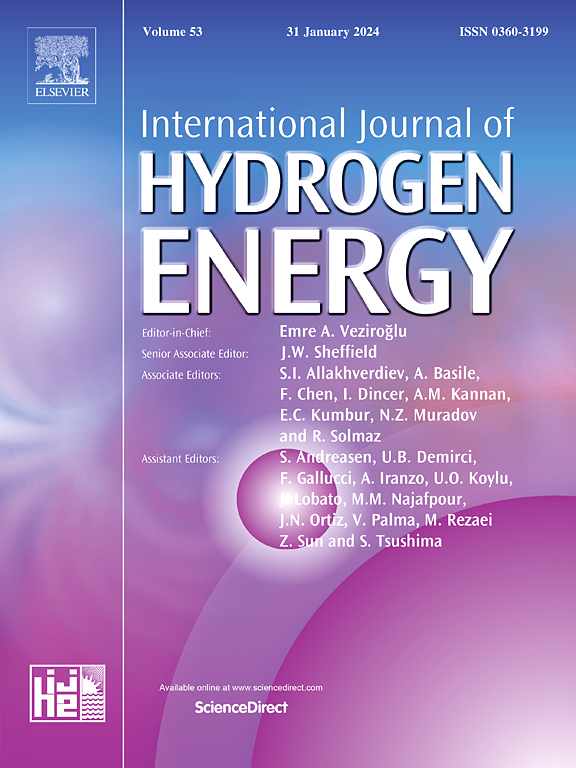全氢苄基甲苯释放的氢气中的杂质--评估和吸附去除
IF 8.1
2区 工程技术
Q1 CHEMISTRY, PHYSICAL
引用次数: 0
摘要
液态有机氢载体(LOHC)技术为克服与元素氢储存有关的大多数问题提供了可行的选择。这些技术通过可逆催化加氢/脱氢循环将氢与载体分子进行化学结合。因此,LOHC 系统释放出的氢应满足高纯度要求。本文评估了从 LOHC 化合物全氢苄基甲苯(H12-BT)中释放的氢的质量,并介绍了一种合适的吸附纯化工艺。我们的研究考虑了在 1.4 至 4.3 kWH2-LHV 功率水平下运行的连续脱氢装置的产品流中发现的挥发性和半挥发性有机化合物(VOC 和 SVOC)、甲烷、一氧化碳、二氧化碳和水杂质。我们确定了脱氢工艺参数(如温度、压力、低浓氢气流量、低浓氢气质量)对氢气质量的影响,并证明硅基和碳基吸附剂的组合非常适合去除氢气产品流中的 VOC 和 SVOC。通过优化工艺和净化条件,释放出的氢气符合 ISO 14687 规定的燃料电池应用要求。本文章由计算机程序翻译,如有差异,请以英文原文为准。
Impurities in hydrogen released from perhydro benzyltoluene - Assessment and adsorptive removal
Liquid Organic Hydrogen Carriers (LOHC) technologies offer viable options to overcome most issues linked to the storage of elemental hydrogen. They involve the chemical binding of hydrogen to carrier molecules through reversible catalytic hydrogenation/dehydrogenation cycles. Hydrogen, released from LOHC systems should thereby meet high purity requirements. In this contribution, the quality of hydrogen released from the LOHC compound perhydro benzyltoluene (H12-BT) is assessed and a suitable adsorptive purification process is described. Our study considers volatile and semi-volatile organic compounds (VOCs and SVOCs), methane, CO, CO2, and water impurities found in the product stream of a continuous dehydrogenation rig operating at power levels between 1.4 and 4.3 kWH2-LHV. We determine the influence of dehydrogenation process parameters (e.g., temperature, pressure, LOHC flow rate, LOHC quality) on the hydrogen quality and demonstrate that a combination of silica- and carbon-based adsorbents is highly suitable for removing VOCs and SVOCs from the hydrogen product stream. Using optimized process and purification conditions the released hydrogen fulfills the requirements defined by ISO 14687 for fuel cell applications.
求助全文
通过发布文献求助,成功后即可免费获取论文全文。
去求助
来源期刊

International Journal of Hydrogen Energy
工程技术-环境科学
CiteScore
13.50
自引率
25.00%
发文量
3502
审稿时长
60 days
期刊介绍:
The objective of the International Journal of Hydrogen Energy is to facilitate the exchange of new ideas, technological advancements, and research findings in the field of Hydrogen Energy among scientists and engineers worldwide. This journal showcases original research, both analytical and experimental, covering various aspects of Hydrogen Energy. These include production, storage, transmission, utilization, enabling technologies, environmental impact, economic considerations, and global perspectives on hydrogen and its carriers such as NH3, CH4, alcohols, etc.
The utilization aspect encompasses various methods such as thermochemical (combustion), photochemical, electrochemical (fuel cells), and nuclear conversion of hydrogen, hydrogen isotopes, and hydrogen carriers into thermal, mechanical, and electrical energies. The applications of these energies can be found in transportation (including aerospace), industrial, commercial, and residential sectors.
 求助内容:
求助内容: 应助结果提醒方式:
应助结果提醒方式:


